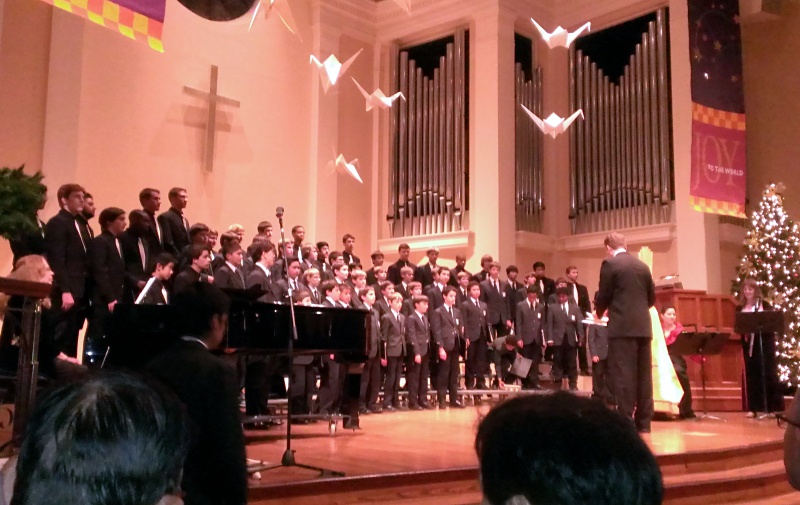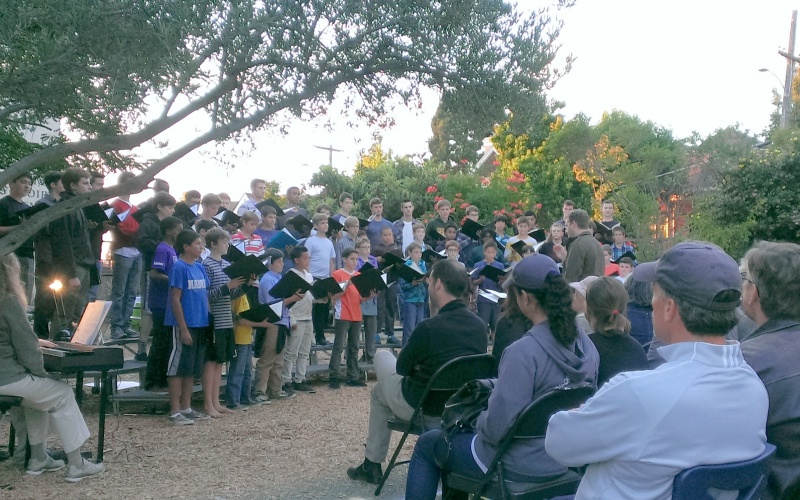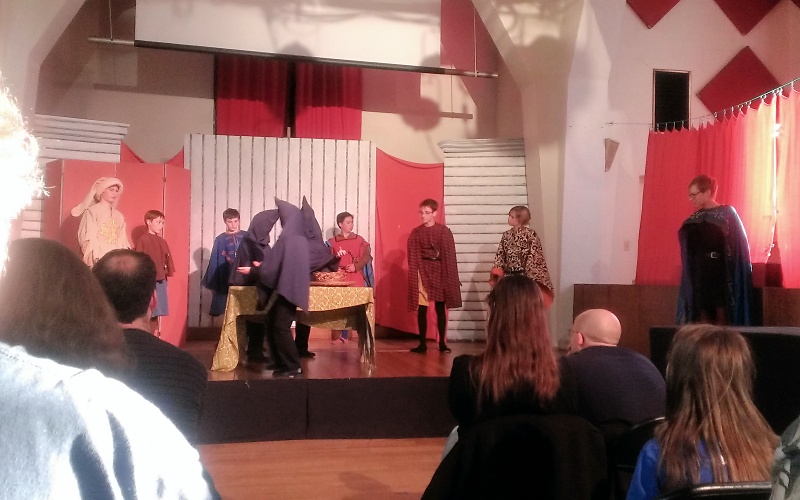 Figure 1. The boys choir has been performing Harmonies of the Season annual holiday concerts, like this one in 2013 at the First Congregational Church of Berkeley, from their initial founding in 1998. (photo courtesy of Nanci Schneidinger)
Figure 1. The boys choir has been performing Harmonies of the Season annual holiday concerts, like this one in 2013 at the First Congregational Church of Berkeley, from their initial founding in 1998. (photo courtesy of Nanci Schneidinger)
Music with Older Kids
A World Class Boys Choir
by Nanci Schneidinger
Attendees at the 2013 CMN conference in Los Gatos, California, were treated to a performance by twenty-five members of the Pacific Boychoir Academy of Oakland, California, a nondenominational independent day school for boys in grades four through eight. In addition to the day school, the academy has seven after-school choirs of boys ranging in age from four to eighteen years that meet once or twice a week to rehearse.
The academy had humble beginnings in 1998 as a choir consisting of six boys from four families (two of the boys were brothers) and four staff members—Marcia Roy, Stella Brown, Pam Weiner, and Kevin Fox, the founding artistic director—rehearsing once a week at a small local church in Oakland. The San Francisco Bay Area did not have a world class boys choir at the time, so Kevin launched a plan to start one. Since the boys would need to rehearse every day, starting a school was also part of that plan.
By November of the same year, the group had grown to twenty boys. Families paid a small fee and the small faculty was able to rent a copier and use Kinko’s to make audition flyers. At this point they had one holiday concert and one spring concert. By the end of the first year, there were thirty-five boys ranging from third to eighth grade in the choir.
 Figure 2. The boys choir gave a sendoff concert for their parents in the courtyard of the school the night before leaving for their tour in Vietnam. (photo courtesy of Nanci Schneidinger)
Figure 2. The boys choir gave a sendoff concert for their parents in the courtyard of the school the night before leaving for their tour in Vietnam. (photo courtesy of Nanci Schneidinger)
 Figure 3. Acting in an annual Shakespearean play, The Tempest, shown here in the school theatre, helps to round out the creative training for singers at the Pacific Boychoir Academy. (photo courtesy of Nanci Schneidinger)
Figure 3. Acting in an annual Shakespearean play, The Tempest, shown here in the school theatre, helps to round out the creative training for singers at the Pacific Boychoir Academy. (photo courtesy of Nanci Schneidinger)
Kevin Fox is also a sports fan. He knew singing the national anthem at sporting games would bring much-needed exposure to the choir, and the boys would really get a kick out of it. They tried to record the national anthem to send to sports teams, but in the early years it was a challenge for the boys to hold their own parts. Marcia sang alto with the altos to help out. Eventually, they got their first sports gig singing the national anthem at a Stanford basketball game. Thirteen years later they were asked to perform at the American League Division Series and they now have ongoing gigs with Cal Basketball, Oakland Raiders, Oakland A’s, and the Golden State Warriors.
Touring brings more exposure to the choir, and Kevin took the boys on their first three-day tour to Los Angeles in June of 1999. They sang at the Richard Nixon Presidential Library in Yorba Linda and at a church service. They did not have much of a repertoire at the time, and Kevin had to sing a few solos. Their first international tour was in 2001 to Australia with twenty-six members, and they have continued to tour internationally.
Kevin’s dream of building the choir into a school became a reality in the fall of 2004. The school began in a church in downtown Oakland with nine students. Today the academy is thriving! Ten years after the birth of the school, the Pacific Boychoir Academy has found a new home in North Oakland and currently has fifty-six boys in the school, with 175 boys in the after-school choirs.
The academy choir is currently, as this article is being written, on tour in Vietnam and Singapore (see Figure 2). Previous international tours have included Spain, Brazil, Germany and Austria, Denmark, Italy, France, Argentina, South Africa, Australia, China, Lithuania, Hungary, and the Czech Republic. The after-school choir also gets to tour, but not internationally.
2004 was also the year the Boychoir won their first Grammy! The award was for best classical album. The Boychoir recorded Mahler’s Third Symphony with the San Francisco Symphony, Symphony Chorus, and San Fransisco Girls Chorus. In 2010 they received their second Grammy for their recording of Mahler’s Eighth Symphony. In addition to the Grammy for best classical album, the boys received a Grammy for best choral performance.
A typical school day for the students consists of the usual classes—Spanish and Latin, Math, Science, English, History, and PE. The boys have three music classes per day and one double music session when everyone is doing music at once. There are four music staff members on site, and all of the rooms in the school are utilized. The boys get an average of two hours of music per day, which includes music theory and sight singing. The boys also read a Shakespeare play each year and perform it from memory at the end of the school year (see Figure 3). So the boys are not only challenged to sing, but must act as well. The academic classes are creative, fun, and challenging. For example, the fifth-grade boys recently made a music video about the digestive system.
Even though the academy has had some phenomenal exposure with international and national symphonies, has been on America’s Got Talent, and has sung in Washington, D.C., at the Nelson Mandela memorial service at the National Cathedral, running a choir school isn’t without its challenges. The inherent challenges with a boys choir include capturing a boy’s voice before it changes and getting children to perform as professionals.
The rehearsal schedules can be rigorous, and it can be a challenge to balance school work with performances. There are a lot of expenses to running a school, and although tuition covers part of it, a significant amount of fundraising is necessary. The idea of a choir school is unfamiliar to many people, so recruiting new boys takes effort.
What are the rewards? Just look at the faces of the boys in this choir school when they are singing. The pure joy in their expressions shows how music has influenced their lives in a positive way. The process of turning a boy who is interested in singing into a world class performer makes it all worth it. There are also the perks of travel and just plenty of plain old fun moments (see sidebar).
As a mother of a PBA student, I can say that the strong feeling of community among the boys and the staff is what I find most appealing. The boys become a family, and they support each other. They come together in song and harmony. More information on the choir can be found at their website: http://www.pacificboychoiracademy.org.